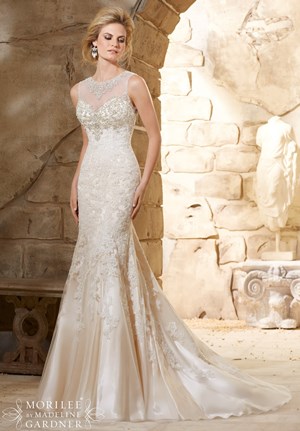
Buying the perfect wedding dress is only half the task done! Now, you have to start the process of having it fitted to your exact measurements, so you can look perfect on your wedding day.
Ready-made wedding dresses are built to specific measurements, based on the designer collection they belong to. When you look at a particular wedding dress collection, you will observe that all the dresses in that size will have the same measurements for the bust, waist and hips. Unless you measure exactly the same for these three aspects, it is likely that you will need at least minimal alterations so your dress fits correctly.
Let us make this more clear!
No two women are alike. Haven’t you noticed how the same dress can look different on two women who share the same dress size? Although your dress size may be the same, your structure and built are different. So, how a dress drapes around you will also be different. A dress is based on standard measurements that guide you to the closest fit. The fact is that it is nearly impossible to find a dress that will exactly match your body size and measurements.
This is where fitting sessions come into the picture. Every bride must have her wedding dress altered to fit her correctly, if she has to look her best on her wedding day. Wedding dresses are structured garments that usually follow your natural shape. Unless the silhouette enhances your best features, and fits comfortably, you can look either squeezed into a dress or holding it up like a hanger. Neither of these are good! Fortunately, it isn’t too difficult to alter your wedding dress, and all it takes is a couple of fitting sessions after you buy your dress.
Before we move on to how you can make the most of your fitting sessions, let us first look at some things that will help you make the job much easier, even before you book your first session.
- Choose a dress in the closest possible size: Don’t make the mistake of choosing a dress that is too big or too small, believing that you can alter it to fit you later. If you want to retain the original charm of the dress, it should be in a size that is closest to your actual measurements.
- When in doubt, choose the larger size: You may be certain that you will shed several pounds in the months leading up to the wedding. Nevertheless, err on the safe side by choosing a gown that is one size bigger than your current one as it is easier to take in fabric, than add extra to it.
- Try not to make too many design changes: Adding sleeves, moving the neck up or shortening the hemline are easy and inexpensive. However, cutting up a dress and modifying it to meet your idea may not be a great idea. It can easily spoil the entire effect of the gown.
- Pay attention to design factors: This is when you may love a gown for it’s beautiful lace hemline that follows a plain stretch of the skirt. In case the gown is too long, taking fabric from the skirt may cause the dress to look totally different once the hemline is cut and moved up. Check with your bridal consultant before you make the purchase, so you do not feel disappointed with the final look after the change is done.
- Trust the job only to experienced wedding seamstresses: Set aside a part of your wedding dress budget for alterations, and trust this task to an experienced seamstress. Don’t ever make the mistake of going with a regular tailor, as experience in working on wedding dresses is absolutely necessary to do the job well.
- Alterations of fabric that are soft and difficult to work with, may cost more: Wedding dresses are made in different fabrics, and some are easier to work with than others. Fabrics like chiffon and charmeuse are delicate and hard to work with. So, expect to shell out more money on altering these dresses, when compared to lace or tulle.
Once you take care of these factors, you will have a gown that will yield to your vision, with minimum alterations. Although you can always schedule as many alteration sessions as you want, it isn’t usually necessary to have more than three or four sessions to get the desired look.
Before you go for your wedding fitting session, it will be helpful to know what you can expect at it. Let us find out now.
What to expect at your wedding dress fitting sessions
During your wedding fitting, you will be working with a tailor or seamstress who has the well-needed experience to work on wedding dresses. Remember that not every tailor is capable of the task, as wedding dresses are complicated garments with several layers of fabric. The design details are also very intricate. Unless the person working on altering it knows her way around wedding gowns, it can become a disaster.
You will most likely have to attend more than one alteration session to have your dress look like it should, on your wedding day. Your seamstress should be able to give you an idea of how many sessions will be necessary, when you attend your first appointment.
The first appointment: At your first appointment, your tailor will take a look at your dress while you are wearing it. She will then suggest what fixes will be required to make it fit your actual measurements. This is also the time when you will have to discuss custom changes like adding a sleeve or altering any design details like the neckline, so it meets your vision.
Your tailor will be taking down measurements and notes, and will pin and tuck the fabric on the dress to make it match your curves and look good on your body shape. At this time, pay attention to whether you like what you see and make your suggestions on whether something should be different. If you want it a little loose or tighter than what she thinks is right, let her know.
Consecutive fitting sessions: Your tailor will work on the suggested changes after your initial appointment. You will have subsequent appointments once these changes are done, and it will be while you are wearing the garment. The following appointments are usually shorter than the first, and you will see your dress coming closer to the final form it should be in, for your wedding day.
If there are any changes that you aren’t quite content with, or you wish to make any further changes to the original plan, you can discuss this with your tailor. If it is practical and there is enough time to work on it, you should be able to have it done.
Now let us take a look at some handy tips to help you make the most of your fitting sessions.
1.Try to be at your target size in time for the final fitting: Fitting sessions are all about getting the dress to fit your natural size and curves perfectly. This will be impossible for your seamstress to do, if your size keeps fluctuating significantly, from one session to another. Schedule your final appointment close to the big day. A week before the wedding would be a good time. By this time, you should ideally have reached your final target size, and your seamstress can do the last-minute changes to make your dress fit you just right.
2.Wear your wedding shoes at the session: Once you buy your wedding dress, don’t delay buying your wedding shoes. This is because you must wear your actual wedding shoes at your alteration session, if you are to get your gown length right. Your seamstress will have to shorten the dress hemline to be just right so it covers your feet. If you buy the shoes after the hemline is done, and the heel length ends up being higher than you assumed, your dress will look shorter than it ought to be. If the heels are shorter, you risk tripping over the dress, and having an accident.
3.Wear undergarments and shapewear that you will actually use on the day: Make sure that your dress fitting is done to perfection, by having it altered over the actual innerwear you will be using on your wedding day. If you wear shape-wear, it will squeeze in any unsightly bumps, making your figure more attractive. Unless you wear it to your fitting session, your tailor would be working with your actual figure when altering the dress. This could cause you to lose the advantage of using shapewear for a more toned look on the actual day.
4.Make sure you feel comfortable in the dress: At each alteration session, the main thing you should look at is whether the dress looks and feels comfortable. If it is loose or too tight, inform your seamstress so she can make the necessary changes. Also pay attention to the neckline. If you have chosen a strapless or sweetheart neckline, see to it that the neckline stays taut and doesn’t shift. You should feel comfortable about where it begins and how tight it is. If the dress reveals cleavage, make sure you are comfortable with the amount of exposed skin. Ask your tailor to make adjustments if it doesn’t meet your expectations or is deeper than you are comfortable with.
5.Follow up on the previous sessions inputs: It will be helpful if you keep notes of the changes you suggested at the previous session. Also take pictures so you know what suggestions were made and can follow through. At the next session, make sure that the concerns you had previously were addressed. If not, ask your seamstress to prioritize them for the next time. If you had any more ideas after your previous session, note them down so you can discuss it with your tailor at the coming appointment.
6.Walk, twirl and make sure you can move comfortably in your dress: You will be in your wedding gown for several hours on the day you get married. Make sure that the dress is comfortable to wear during your fitting sessions. Lift your arms and stretch them to see if the neckline stays steady. Try sitting down, walking and twirling as you would on the dance floor to ensure the fabric doesn’t stifle your movements. Also walk around a lot, to make sure that the skirt length is correct and you do not run the risk of tripping over an excessively long hemline. Discuss the changes that may be necessary if the bodice is too tight or feels loose, and ask your tailor to correct it for the next session.
With these tips in mind, you should have no trouble with your alterations. Watch yourself love your wedding dress more and more with each consecutive appointment when the dress is made to fit you perfectly.
At Best for Bride, our wedding dress services include wedding gown alterations. Our seamstresses have years of experience working on wedding gowns and can offer you the best possible service you can get, for the most reasonable cost. We handle everything from simple dress fittings to complicated design changes easily. Whether you want to have your wedding dress altered or your wedding party’s dresses fitted to perfection, you have the solution at Best for Bride. Call us or drop in today to find out what we can do to help you. Watch our video for more tips and advice on using our alteration services.
Our store also brings you wedding dresses of every style from top-class designers and a range of wedding services. We pride ourselves on being a one-stop bridal destination and welcome you to visit and explore all that we offer you to make your dream wedding day a reality.


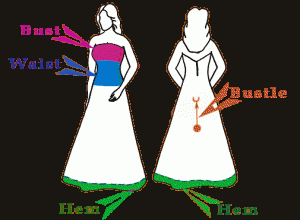
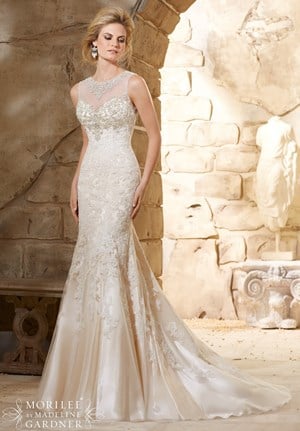
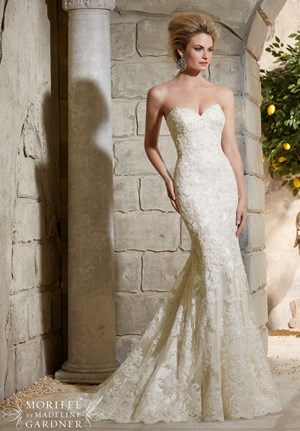
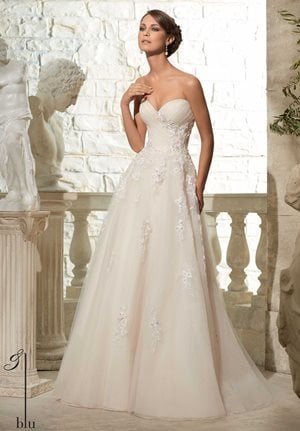

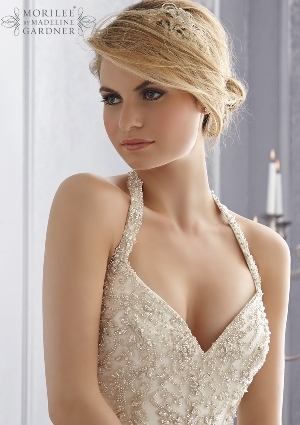




![Celebrity-Inspired Wedding Dresses from the Red Carpet to the Aisle [2024]](https://i0.wp.com/www.bestforbride.com/bridal-shop/wp-content/uploads/2023/12/Experience-the-Magic-Celebrity-Inspired-Wedding-Dresses-from-the-Red-Carpet-to-the-Aisle.jpg?ssl=1)
![Stay Prepared for Unexpected Last-Minute Wedding Dress Emergencies: 8 Key Scenarios [2024]](https://i0.wp.com/www.bestforbride.com/bridal-shop/wp-content/uploads/2023/12/Stay-Prepared-for-Unexpected-Last-Minute-Wedding-Dress-Emergencies-8-Key-Scenarios.jpg?ssl=1)





The wedding dresses that you show are all so stunning. I just do not think that I could pick just one, even with a fitting.
You need to get out there and start the process. Once you do that you will see that you have the confidence to get the job done and maybe it won’t seem so impossible for you!
There is a lot to be said about getting that dress to fit JUST RIGHT 🙂 In the end, it just makes sense that you are getting it tailored to your body style, right?
I feel like as long as you know your specific body measurements, getting a dress that fits just the right way on your body should be easy! However, I have never been to a fitting so I am not sure how much help they are.
I thought the same thing, but when I should up to try a few dresses on based on those measurements, I did not have such good luck. There were many things still changed to make it fit right.
One of the biggest things that I have an issue with is the fact that I am not 100% comfortable in the dress all the time. I figured that the one that I choose is not going to be on me that long, so what is the difference how comfortable I am?
I liked that you explained that one thing to keep in mind when wedding dress shopping is that you should order the dress in your correct size. I would imagine that buying the dress in a size bigger or smaller would create pressure for you to gain or lose weight before the wedding in order to properly fit in the dress. I will be sure to order my wedding dress in the correct size to avoid any problems.
Thanks so much for the advice on how to choose a dress best suited for alterations. My partner wants to wear a dress to our friend’s wedding and we want to be sure the dress fits them well so they can wear it for other occasions too. We’ll have to look into finding someone we can trust to do a good job fitting the dress to their measurements.